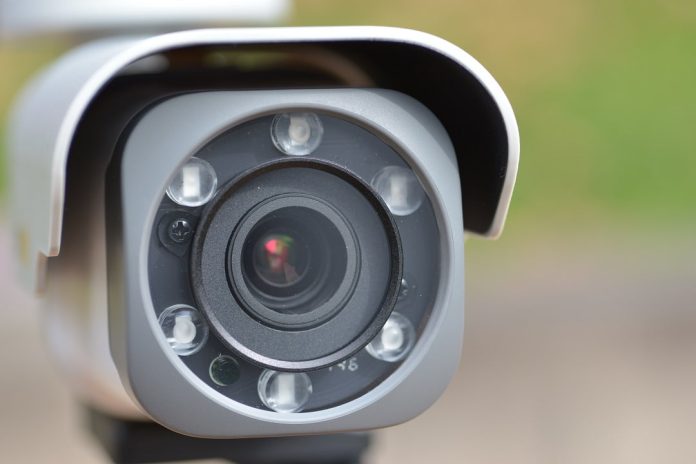DVTEL’s Quasar is an IP66-rated 4K UHD bullet camera offering 4072 x 3076 pixels of resolution and sporting 6 integrated IRs, a combination that gives strong performance in real world applications.
NO one is certain what a Quasar is. These vast intergalactic objects throw out huge amounts of energy, including light. They appear to be stupendous stars in some images, yet possess some of the gluttonous characteristics of light-absorbing black holes. Their dichotomous nature shares kinship with DVTEL’s Quasar UHD bullet camera, which features a light-hungry 1/1.7-inch CMOS sensor and 6 powerful IRs, giving an effective range of 40m in zero lux.
Having spent a week with DVTEL’S Quasar 4K camera during the SecTech Roadshow HD Camera Shootout, I had a reasonable sense of the camera’s strengths and weaknesses. Or so I thought. Our compact SecTech test jig featured a depth of field that never exceeded 6 metres and it wasn’t until I set Quasar up outside the SEN office and sat down at my workstation that this camera truly revealed itself to me.
Camera specifications
Before we get stuck in, let’s rush through some fundamentals of Quasar. The big thing is 4K resolution – that’s 4072 x 3076 pixels. At SecTech’s HD Camera Shootout we really didn’t get to see exactly what 4K means, but more on that later. Held in the hand, this Taiwan-built camera has good feel and a weight of just under 1kg. The sun shroud and snout of the camera are poly and feel well-made. The rear part of the camera body is aluminium and acts as a heat sink.
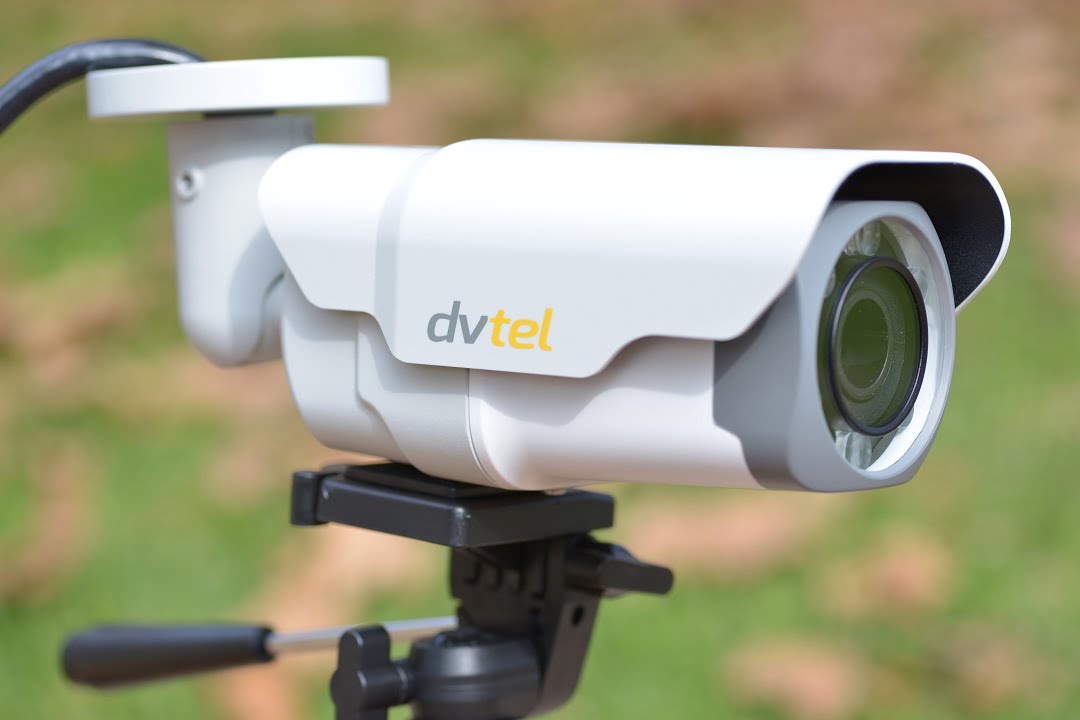
Quasar is a unit – it has an integrated mount with a set of flying leads emerging from a single cable shield. The mount is all metal and all the terminations, which measure about 40cm, are nicely done. The unit has a front window behind which are located the LEDs and the recessed lens, which in this case is a 9-22mm varifocal giving a field of view between 45 and 18 degrees. The lens is quick at f1.4 and at least the first element is coated against flare and ghosting.
The back-side illuminated, progressive scan CMOS sensor is chubby at 1/1.7-inch (7.6 x 5.7mm) and gives a strong resolution of 4072 x 3076 pixels. BSI sensors employ specific imaging element designs to improve the light captured by their sensors and enhance low light performance. That’s especially important with 4K, which sees many photo sites packed onto a single sensor. DVTEL claims low light sensitivities well under 1 lux for colour and monochrome but I tested Quasar with the IR illuminator on.
The lens is motorized and has auto-focus, auto-iris/p-Iris, D/N cut filter, automatic electronic shutter (AES) 1.0 to 1 / 10,000 (auto) with digital slow shutter (DSS) 1/1 to 1/25 or 1/30 with up to 32x sensitivity boost in color or night mode. There’s white balance, automatic gain control, auto back light compensation, compression on/off, iris control P-iris, wide dynamic range (WDR) On/Off and 3 levels, noise reduction 2D/3D/colour, tamper detection on/off and schedule, 5 privacy zones, VMD, and smart day/night mode. Signal-to-noise ratio (SNR) is solid at ±50 dB.
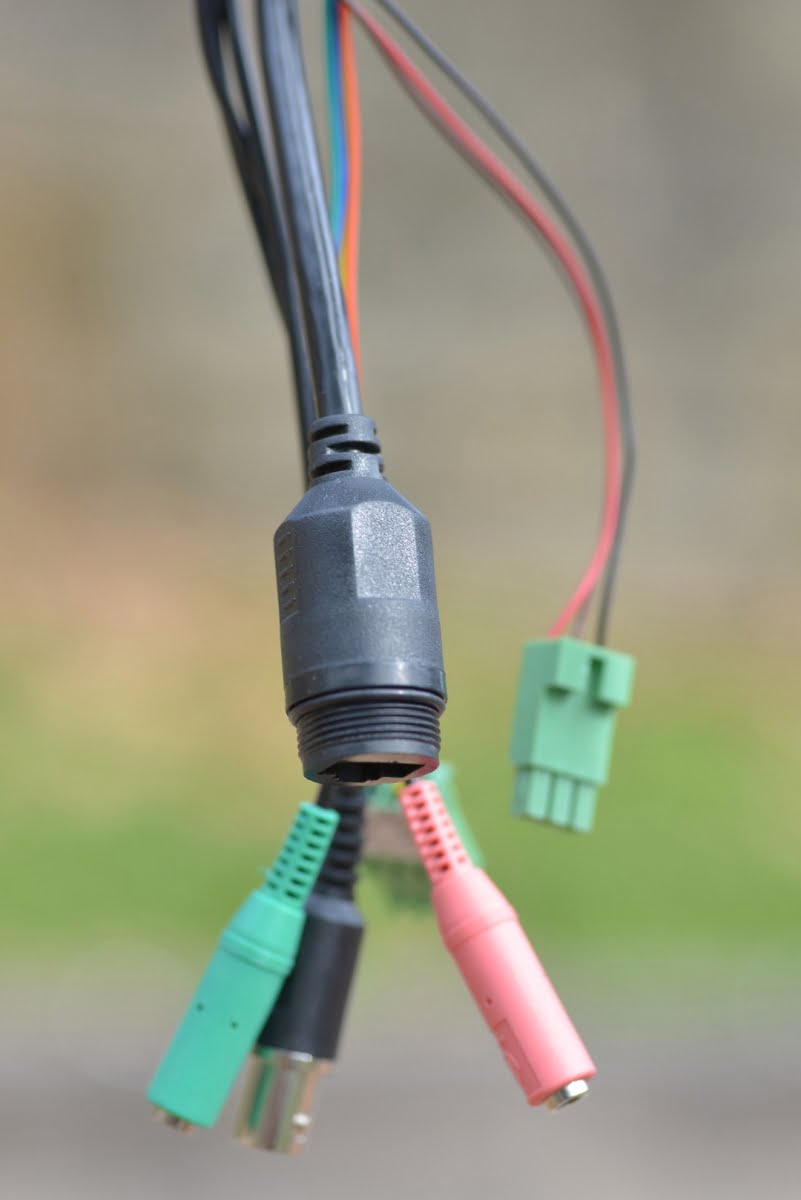
Terminations are nicely done – the audio blocks are in the background.
Video compression is fully compliant multi-stream H.264 main/high/SVC/baseline profile + MJPEG (FHD). Maximum performance is H.264 30/25 FPS @ 4K or you can go for H.264 15/12 FPS @ 4K + 1080p + 720p + D1 (NTSC/PAL). Resolution range is scalable from CIF to UHD but I stayed at full resolution throughout. Bandwidth is configurable between 64Kbps and 20Mbps, which gives plenty of room to move. We noticed at SecTech that Quasar controlled bandwidth exceedingly well at full frame and full resolution, outperforming most 1080p cameras in our tests. It did just as well for me.
Other features include microSDXC up to 128GB (Class 10), bi-directional audio (line in and line out with G.711, G.726 audio connections terminal block already installed). The IR illumination system comprises 6 SMD 850nm LEDs offering that 40m range of 40m and a useful angle of view of 60 degrees – perfect for a lens with a 45-degree field of view as I was always in the IR sweet spot.
As usual, I’m testing this camera on SEN’s Dell 9020 server workstation, which hustles an Intel i7-4770 3.4GHz quad-core processor (8 threads per core), with 8GB of RAM. The 9020 has an AMD Radeon R7 250 graphics card with 2GB of RAM – it’s not a sky rocket but that’s loads for a small group of cameras. Camera power and data are handled by a dedicated Netgear GS108P ProSafe 8-port Gigabit switch with all the components living on a dedicated subnet with no additional tasks assigned to switch or workstation.
Test driving Quasar
The last few cameras we’ve tested I’ve driven through ONSSI Ocularis but I’m driving the Quasar through the camera browser as it’s not integrated with Ocularis just yet. While camera browsers are not the composite management solutions you enjoy with a quality VMS like Ocularis, Quasar’s browser is actually pretty good for the tasks I’m undertaking. My only gripe is that there’s a little latency in the controls and it’s easy to go a step too far with focus – you need to bear in mind you are controlling optical focus remotely with Quasar. With a properly integrated VMS platform – DVTEL Latitude, for instance, things would be more seamless but it all works well enough.
The first thing I do is muck around with settings. It’s 5.30pm in winter so things are getting towards dark. I don’t change much – I lift sharpness, colour and hue 5 per cent, turn noise reduction on and leave WDR at default. Post SecTech Roadshow I can help feeling a strong tendency towards balance in camera settings. Unless someone is going to tweak settings as the light levels fall each day, you installers and end users are going to want a capable mid-point. Of course, that doesn’t mean default. You really need to live with a camera to learn how to get the best out of it.
I start testing out the back and measure only about 12 lux at the lens before pointing the camera down the hill towards Elizabeth St. The moment I go to full screen – bang – an eye-whack of 4K from the Quasar. Resolution is spectacular. Something to note here is that I’m using the 9-22mm lens (there’s a 3-8mm wide angle option), which is a longer than usual focal length. I find that for my jumbled district scenes with narrow streets and lanes, 9-22mm is a nice range – it doesn’t spread the pixels out too far, allowing super sweet digital zooming.
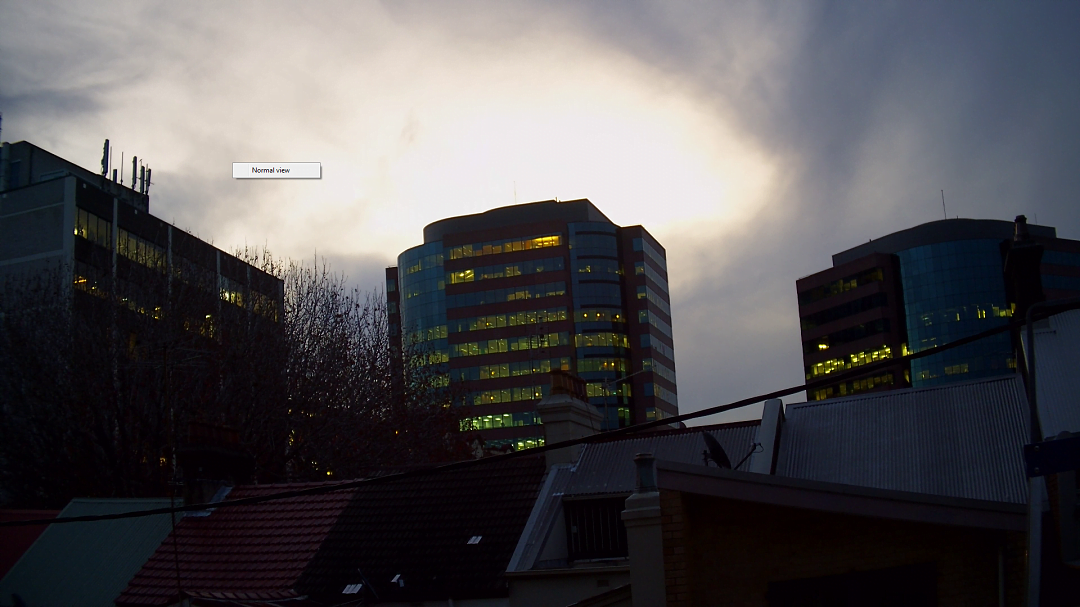
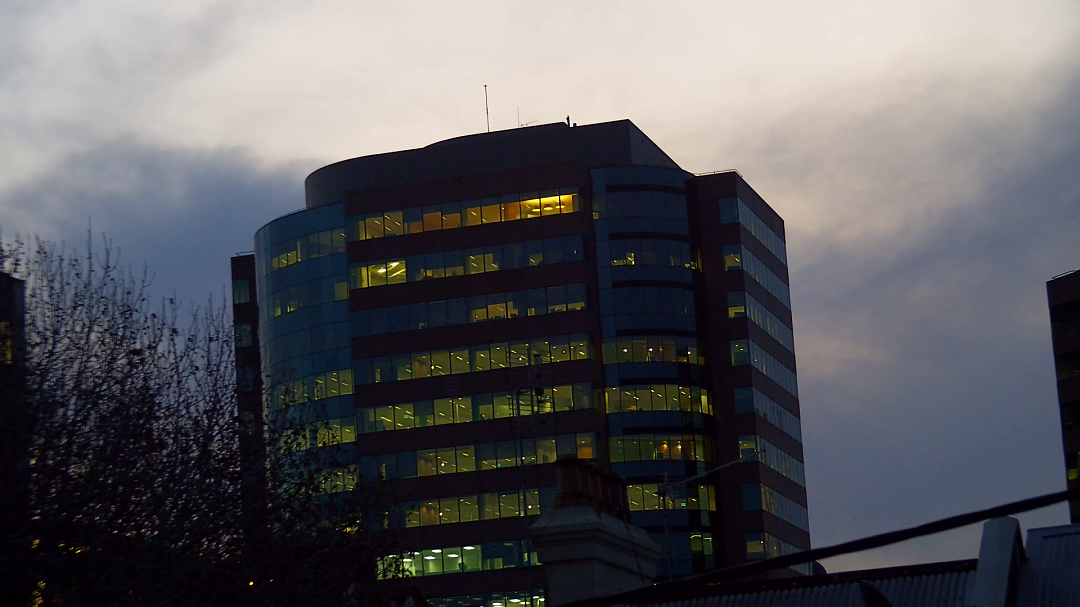
The office buildings on Elizabeth St (250m away) look pretty good at 9mm but when I wind the tele into 22mm I’m getting the best view into those offices I’ve ever had. The foreground is gloomy but the detail, even where light is low, is sensational. In that sentence lies the unspoken pay-off. High resolution means smaller photo sites, which means low light performance is not as strong as you’d get with a ½-inch sensor built to deliver 1080p. As we’ll see, however, things are different in this test when compared to SecTech’s HD Camera Shootout, because today Quasar has its integrated IR on.
Before light levels drop any further, I swing Quasar around to view the city. The camera is staying in colour. Detail is good, though I can perceive some noise in this scene that suggests ISO is now elevated. When I zoom from 9mm to 22mm the scene tightens dramatically. It’s still colour, there’s the faintest haze of noise, but the image remains taut. I’m focused on the distant towers and the level of detail through the scene is exemplary.
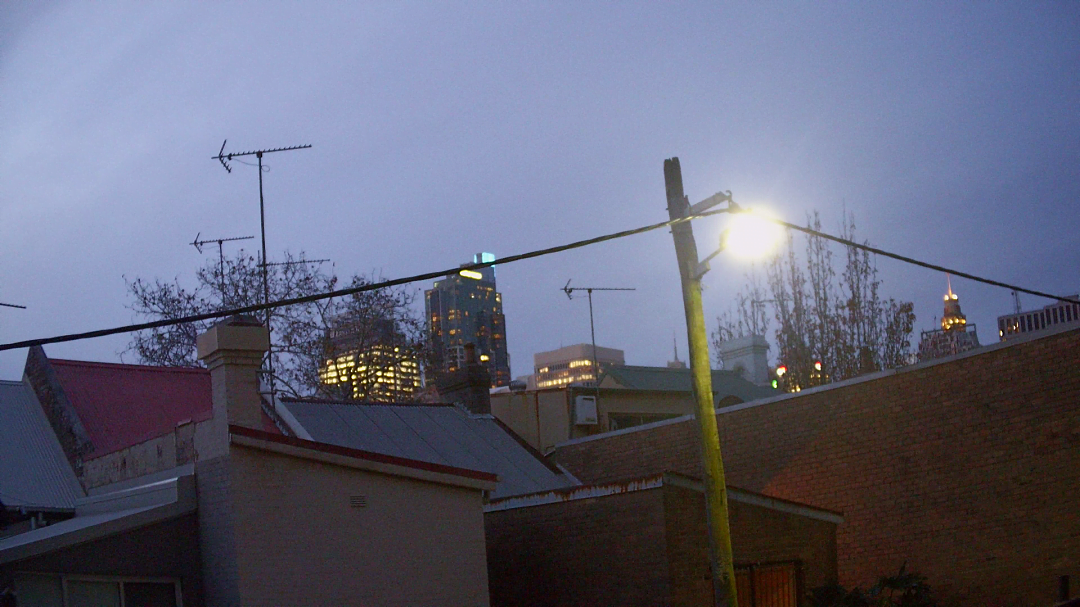
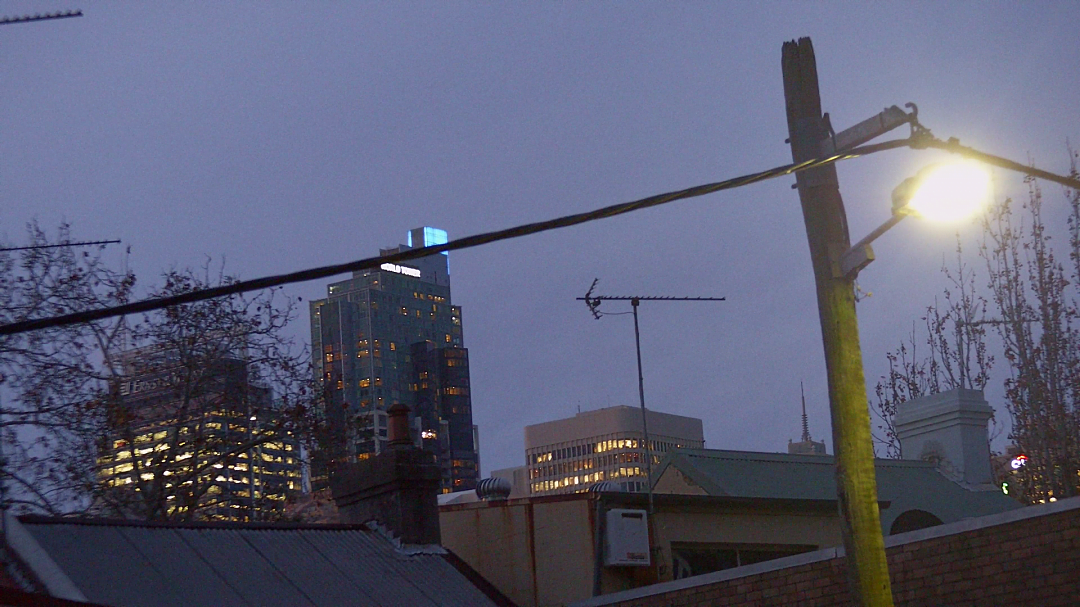
World Tower (on the right) is at 1000m.
Something I notice very early is a lack of barrel distortion. That’s partly because this is a longer focal length lens but even at the widest viewing angle of 9mm (45 degrees) curvature of vertical lines at scene edges is very well controlled. Something else that’s well controlled too, is blooming. The streetlights in the lane remain comparatively tight and I can see their entire surrounds, suggesting sensible ISO levels and a shutter speed high enough to avoid excessive motion blur.
At about 9pm when conditions are as dark as they will get (1 lux at the lens, 1-4 lux in the lane) I take some more shots out the back. Performance is good under IR. I think DVTEL’s claim of 40m is pretty accurate and the IR spread shows no vignetting – a 60-degree light spread works well with a 45-degree angle of view. But it’s zooming in that really has Quasar kicking up its heels. As I start to reel the scene in, all sorts of fine details I’ve never seen before become apparent.


Half tele and then full tele…
There’s a little processing shimmer in the scene but detail is outstanding. I’m getting nail heads in roofing iron and scraps of paper on the ground, strands of straw poking up from the backyard of the share house 2 doors up (8m from the lens), grain in the walls around me. At full screen and half zoom I can read ‘No Stopping’ on a tiny red sign at 20 metres. IR hates red, so that’s impressive.
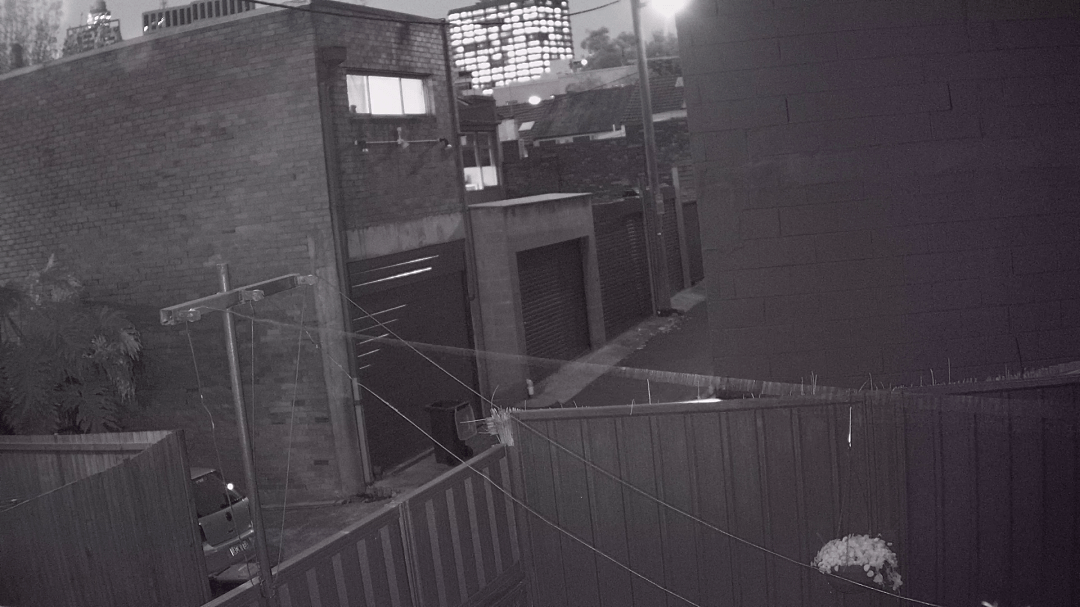
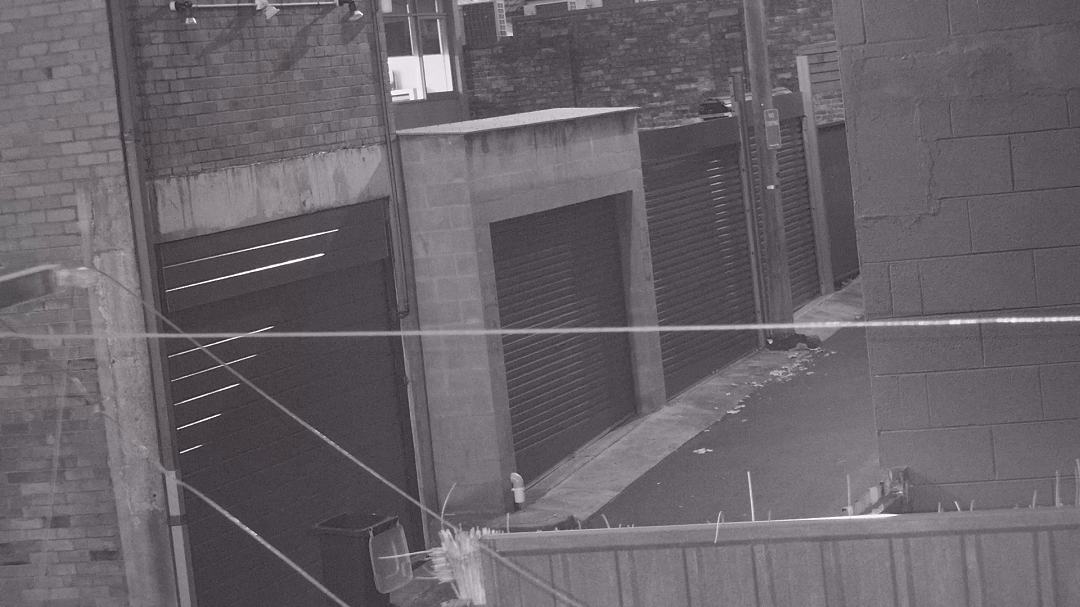
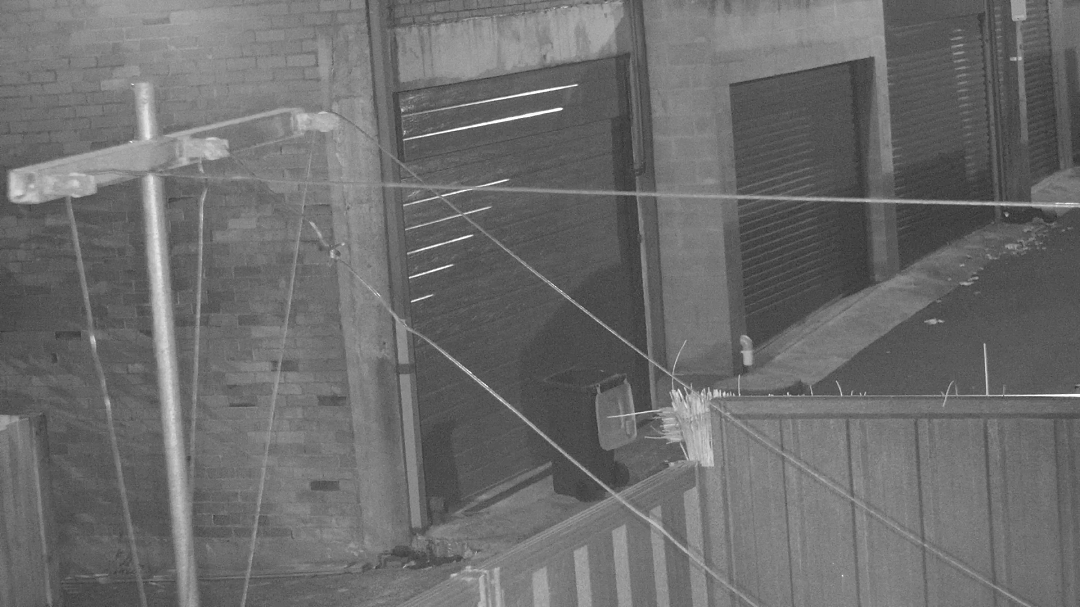
I notice some colour tone changes in monochrome performance but there’s no impact on image quality.
Barrel distortion is non-existent at this focal length and there’s no pin cushion distortion, either. When I go in all the way to 22mm the image shifts towards sepia and I gain a little noise and softness but there’s still loads of detail. The same applies when I aim the camera up towards the furthest brick wall. A very tight scene at 15-16mm will get a little swimmy at full zoom in low light. In part I suspect it’s because I’m zooming out of the meat of the IR range and into the gloom beyond. Down the lane is darker still and you can see the IR function better here, bouncing off the white painted house-backs and distant tree branches.
Next I go out the front. It’s 4 lux at the lens out here and I trundle Norman up the street on a trolley to give us a familiar target. Because the integrated IR is not laterally offset from Norman’s shin-height license plate strip, I get flare but I also get face recognition at 8m. The level of detail in the rest of the scene is profound. On screen I can see details in distant wrought iron rails, ripples and tears in the paperbark trunk, bare branches and twigs in the distance. Now I take Norman back to 12m and while I lose face recognition, I gain the license plates.
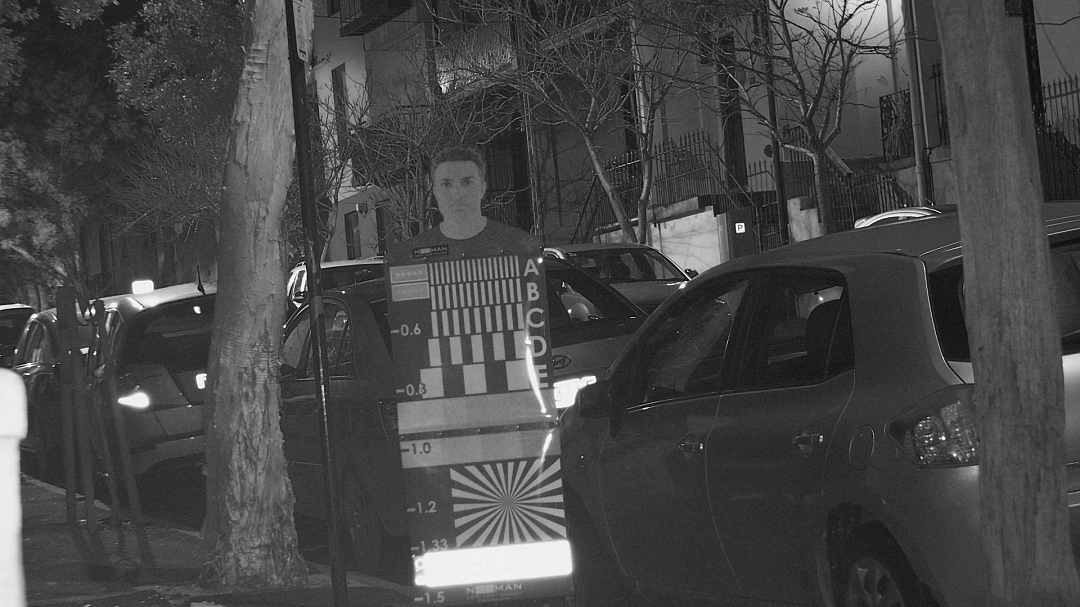
Norman at 4 lux ambient with IR on – lens to target distance is about 8m.
The next port of call is 16m – half way across the Yaffa building, and my movement activates a couple of 100-watt fluoro flood lamps at its entrance that put around 25 lux on Norman’s face. This makes a huge difference to the light level in the scene, which is instructive. And look at the depth of the scene. It’s a piece of work. I can read the Albion Lane street sign at 40 metres and Albion St at 70m. As soon as the floodlights go off, the scene is much more challenging with only 2 lux at Norman’s face but there’s still a high level of detail.
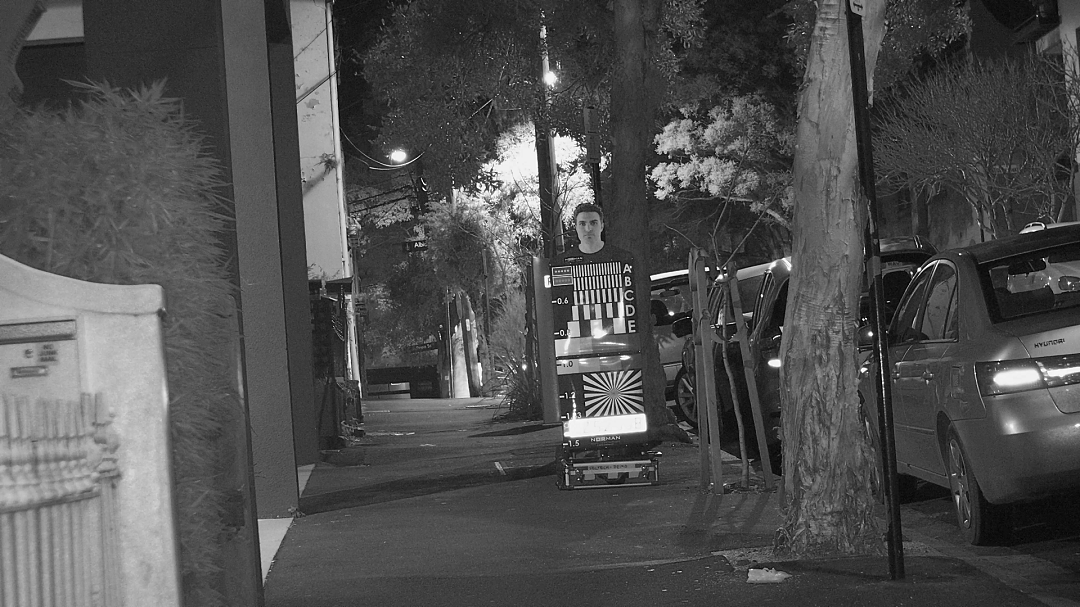
These images are all at 22mm…I measure about 25 lux at Norman’s face.
Next day at around 12.30pm I take a series of shots out back in 75,000 lux with the sun to the right and above the camera. It’s horribly glary out here with the sort of thin cloud that diffuses bright light but does not significantly reduce it. In the wide angle view you can see the profound level of detail from front to rear in this scene. It’s an excellent image that suffers very little from barrel distortion.
Something I notice is that when the Quasar is really pushed by backlight, colours get muted. Important to point out, is that this is common in any CCTV camera being blind-sided with 75,000 lux or more. There’s also some chromatic aberration in the form of purple fringing to be seen in high contrast areas, along the powerlines and around the edges of buildings and antenna. While this softens a scene, overall there’s more detail in this image than in any other camera we’ve tested.
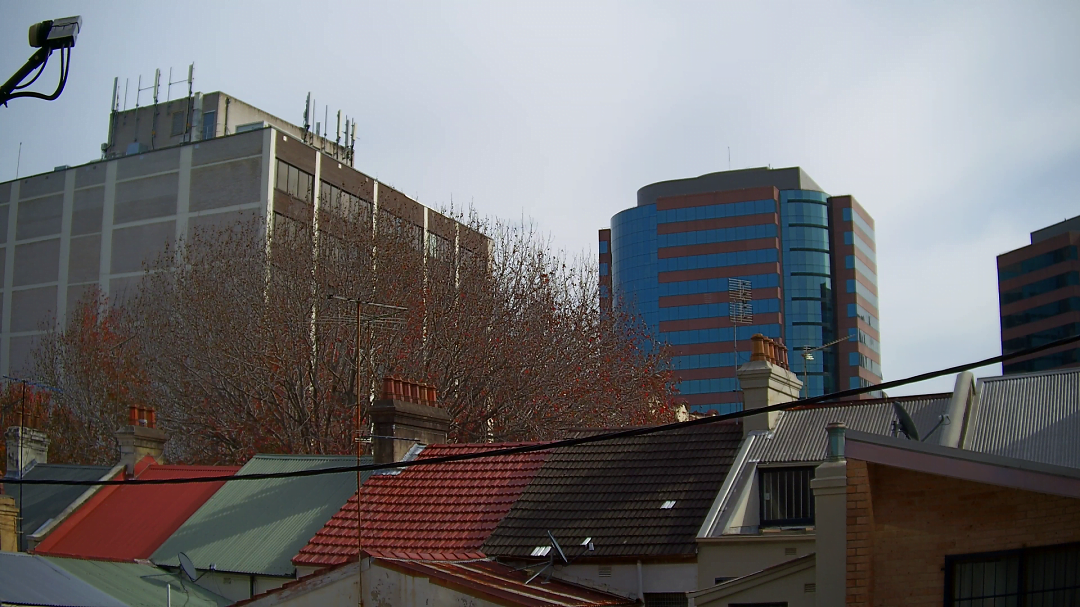
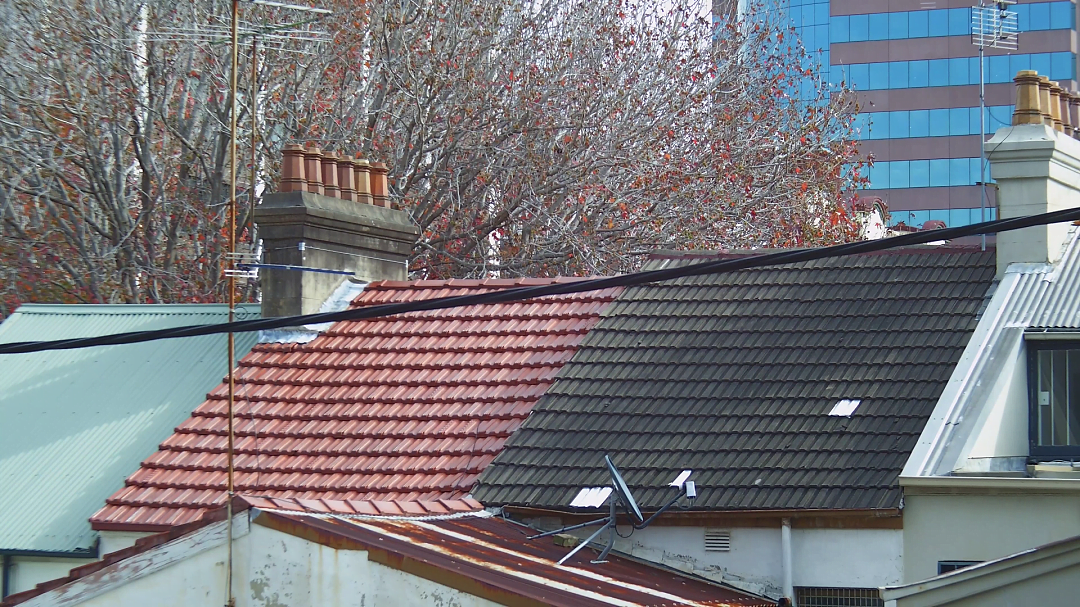
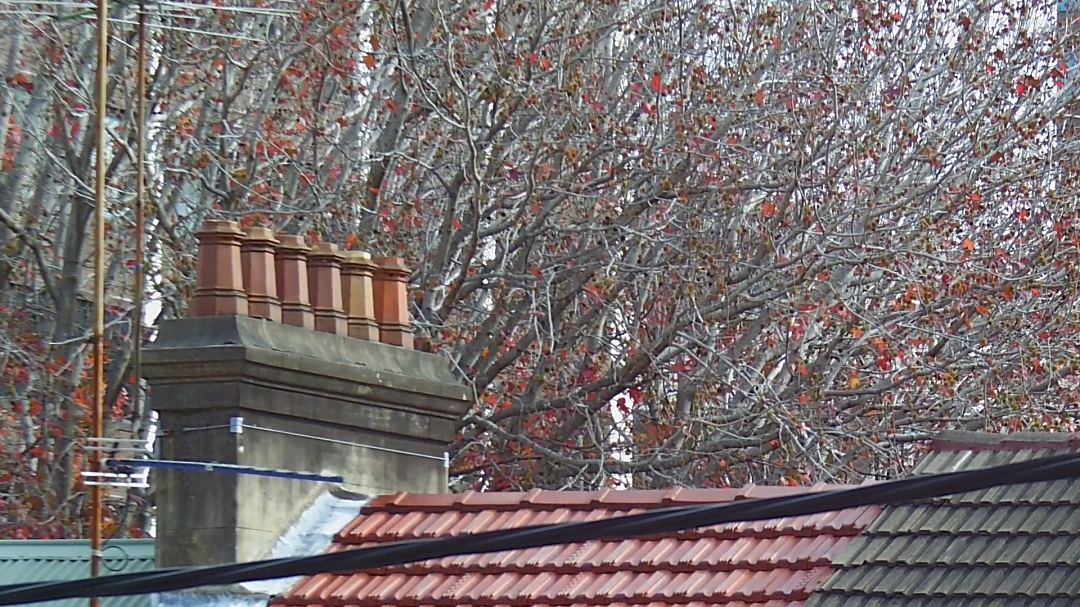
The further in I zoom, the truer the colours become – it’s probably the reduction in aperture unloading WDR mechanisms.
Next I swing the camera back down the lane away from the sun. I’m looking at a wide angle view here and I can now see some barrel distortion on the distant buildings on either side and purple fringing on the building to the right. Overall, there’s loads of detail in this scene, though at depth the images have a smoky rebuilt look to them. Next, I swing the camera a little more and pull in the zoom to view roof tops, chimney pots and trees and the whole colour balance changes. Without the sun provoking WDR mechanisms, colour and texture come alive and fine detail sprouts from every surface.
This is still a deceptively deep scene. The roofline in the mid-ground is at about 30m, the trees another 15m beyond. There’s fine detail everywhere, colour rendition is good and sharpness and general acuity are quite high through a wide focal point, which is beaut given the quick f1.4 aperture. Zoomed in all the way, you can again see some softness but it may be a shallow depth of field engendered by the longer focal length and very small f number.
Next, I swing Quasar down into the lane and you can really see in the images what UHD means. It’s really, bloody good. Lashings of detail throughout, from the leaves on Fred’s pot plant over the fence, to the license plate on the neighbour’s Aurion, the texture of bricks and the creases in garage doors. It’s good work. This scene is still under 75,000 lux, with the camera looking under the sun.
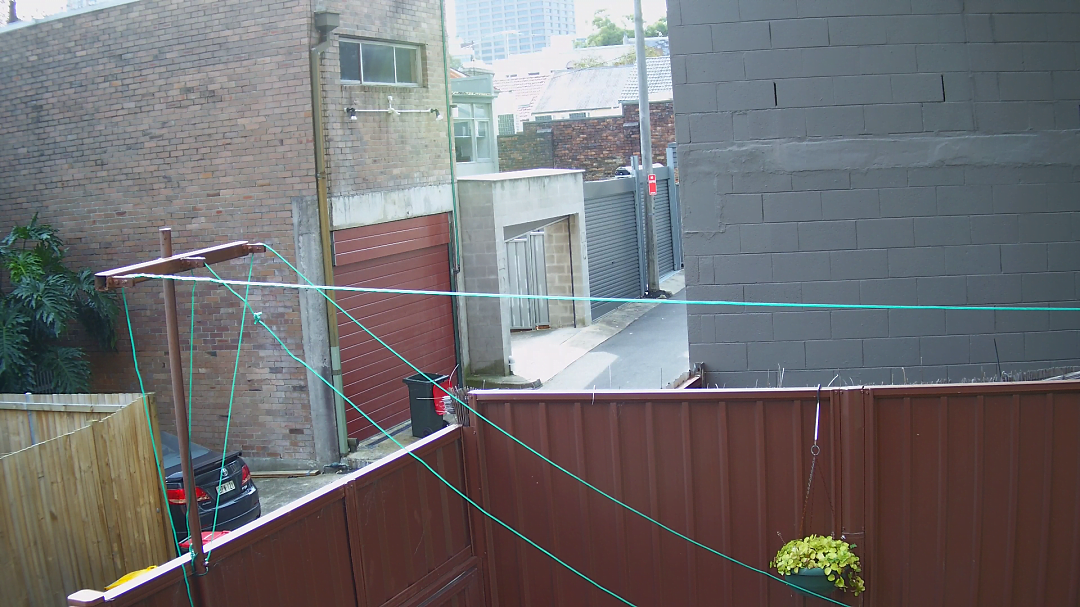
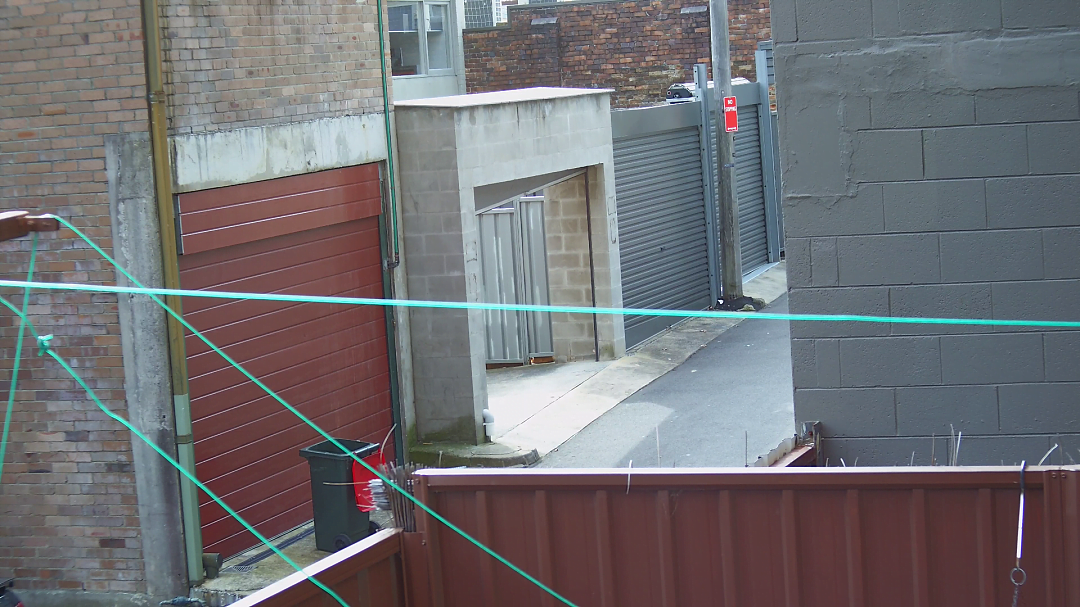
Look at the brickwork in the far wall – that’s 36m away – top image is at 9mm, the bottom is a mid zoom point – maybe 15mm…
The complete lack of ghosting and flare at all times is a credit. I think I see some colour shift towards green in the top half of the building centre left. Winding in the mouse wheel half way and you really see the power of 4K. This is a smoking image. That far brick wall is at about 40 metres and I can almost make out the shape of every brick in full screen on my workstation.
Back in the office I check out WDR performance looking out the back door into the sun. I had thought to put Norman in this scene but it’s really not necessary. With WDR set to mid, Quasar is looking out the door and getting detail in the courtyard. There’s blooming in the kitchen and in the foreground there are areas of shadow and I think colours are slightly and typically muted in the presence of backlight but overall, detail is extremely good.
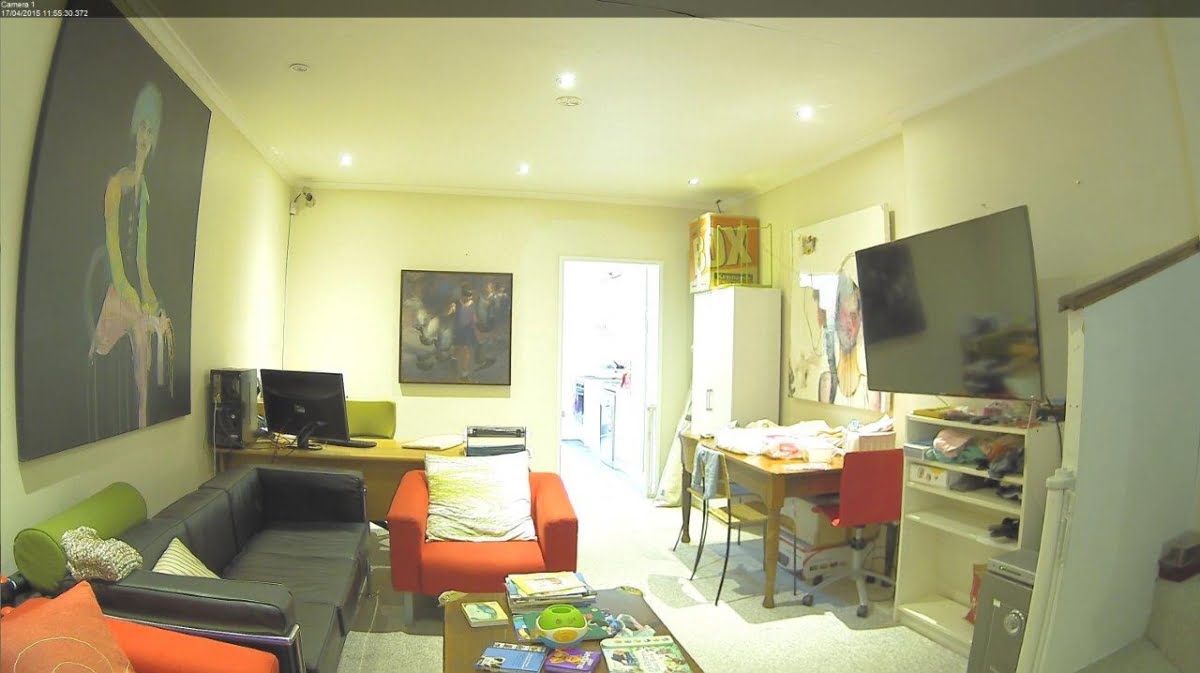
Pretty good WDR performance – any camera that can see through the office kitchen is doing well.
Now I head out the front into daylight shade – it’s about 5000 lux out here below the towers – you can really see how well Quasar does in public surveillance. I put the camera at 9mm and viva the resolution! This scene is backlit by strong reflectance, too, so you do get a sense of how Quasar handles that variable in more typical applications. Next, I wheel Norman out to 12m and again, look at that image from the Quasar. I think 9mm is perfect for a streetscape this size. The detail is painted deep into the scene giving me a dimensional sense.
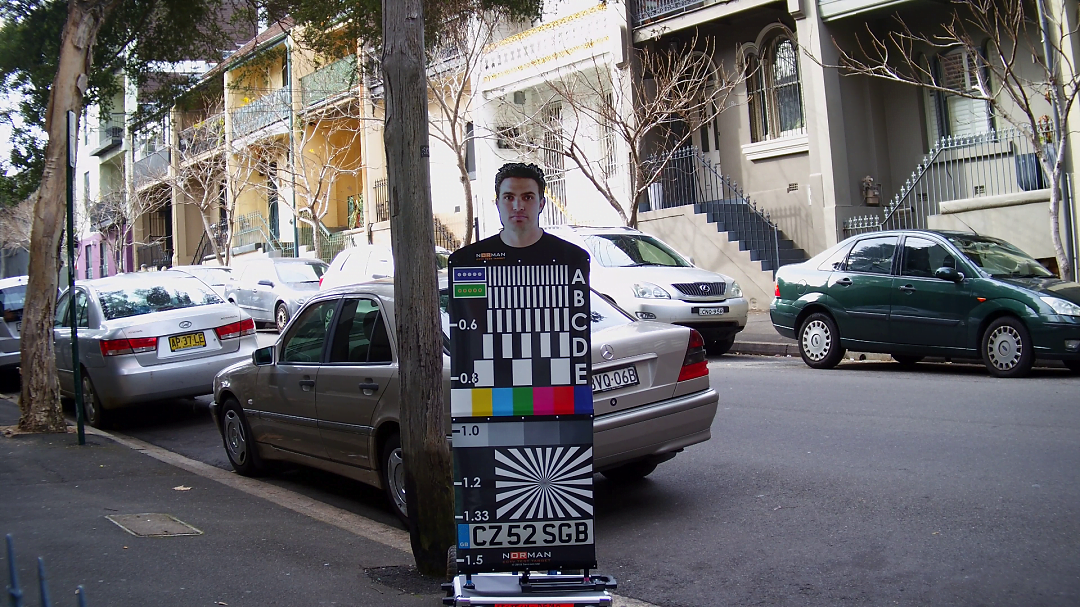
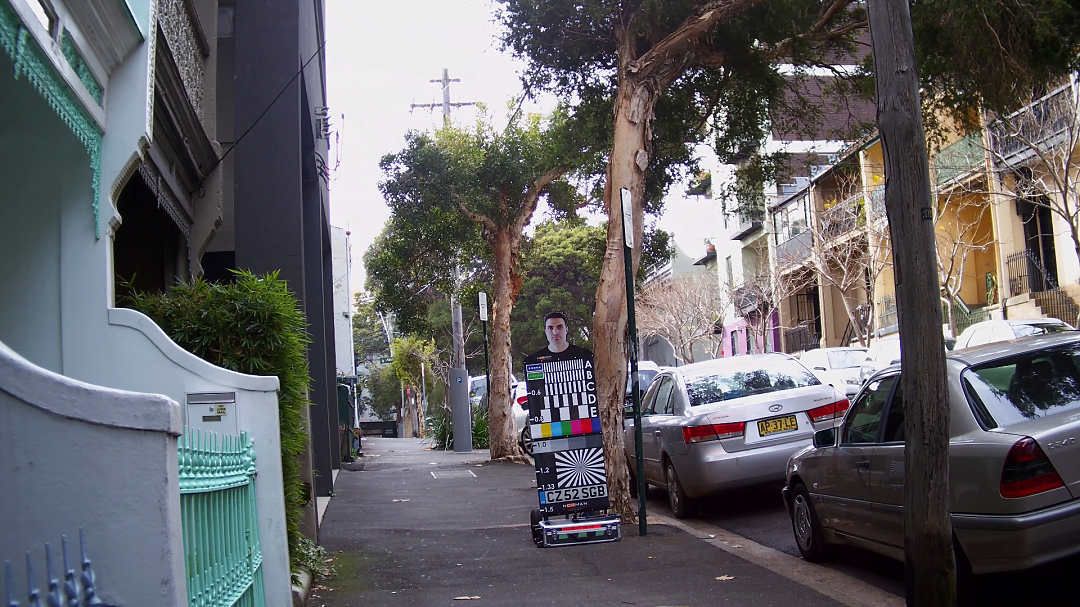
The level of detail and the depth of field in good light are something to behold. At full resolution on my screen I can read the second street sign on Albion St.
Next, I take Norman out to 20m. He’s standing outside Ruby House which is why he’s looking so uncomfortable. We are getting face recognition with digital zoom at this focal length. We are getting his license plate. From the letter C on Norman’s chest down, we have delineation of blacks and whites. In the far right of this scene on the unit block wall there’s some over exposure starting to mist detail but generally speaking, this is a super image. Finally, I reel the lens all the way in to full tele. Norman’s expression of unease is clear to see now but we have excellent detail and great colour everywhere.
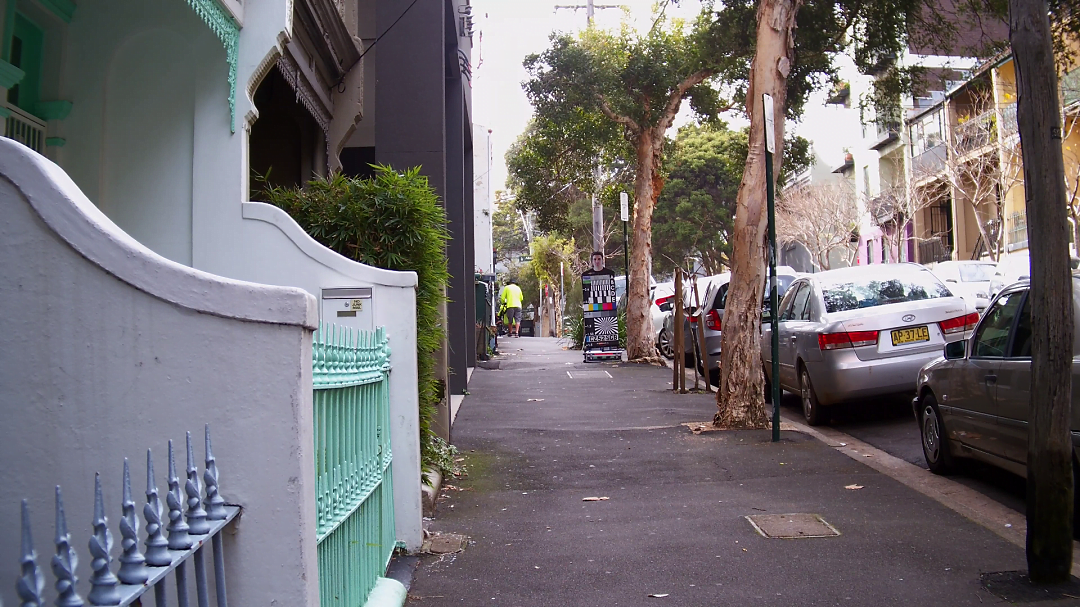
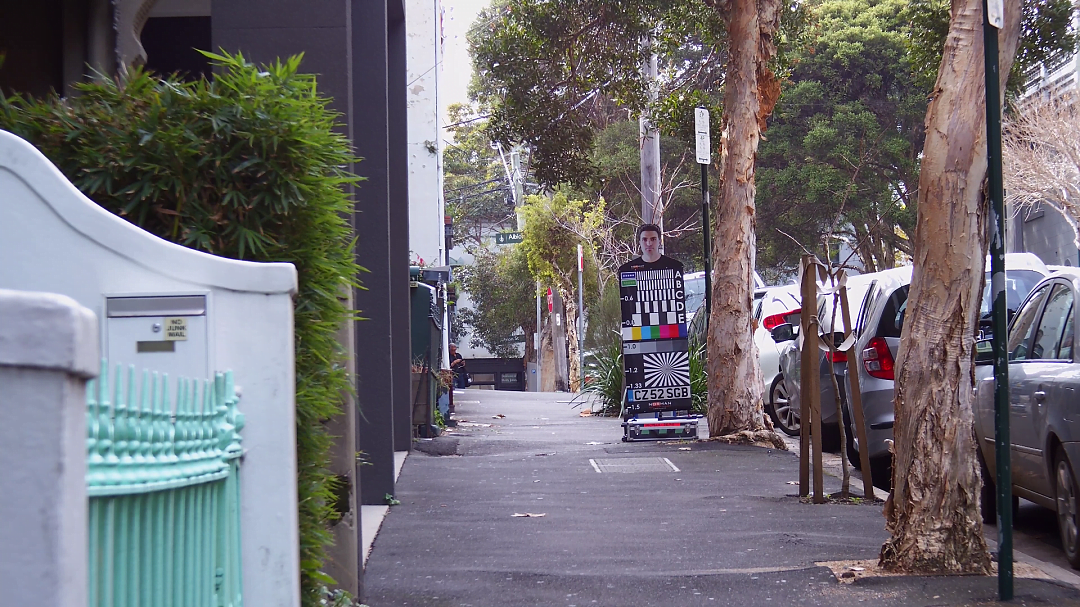
The first 3 images in this group are at 9mm and the final image is at 22mm…
DVTEL Quasar is a good camera – much better than the sum of its parts. That huge resolution is just so useful on the street. You actually can zoom in with 4K – it’s not adventures in artifacts as it is with 1080p. There really is no substitute for pixels. Quasar is not the best low light camera I’ve seen. Nor is it the best WDR camera I’ve seen (though apparently DVTEL has an excellent WDR camera in its lineup). However, allied with a capable integrated IR system, Quasar makes the most of its assets.
By John Adams
Features of DVTEL Quasar include:
* Multi-streaming at the highest frame rates
* 4K Ultra HD at full frame rate and the lowest bit rate
* P-Iris
* Indoor/outdoor, IP66-rated
* Vandal Resistant
* 40m IR Illumination
* Web interface for viewing and configuration
* 4-year warranty.



